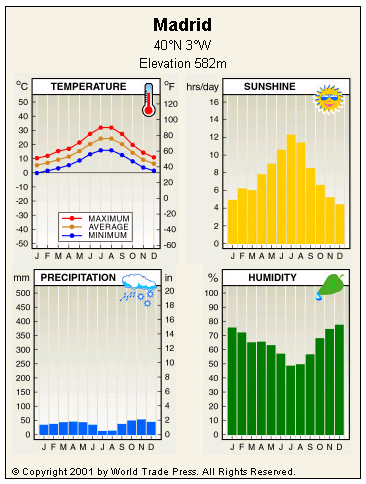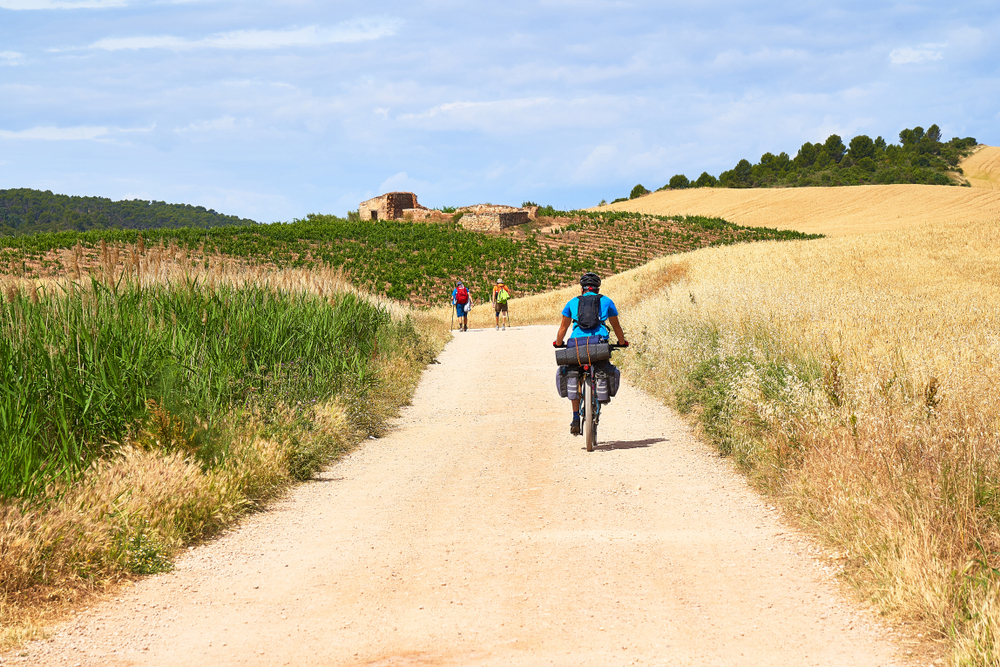Country Snapshot: Climate Overview
Spain is a southwestern European country with an Atlantic coastline to the north and a Mediterranean coast to the south and east. The northern part of the country has a marine west coast climate, and includes the Pyrenees and Cantabrian mountains, which rise from 1,800–3,000 meters (6,000–10,000 feet). Most of the interior is a plateau with an average height of 450–900 m (1,500–3,000 ft), while Andalusia to the south is lowlands, mountains, and narrow Mediterranean coastlands.
Seasons
Winter (December to February) is mild along the coast, but cold and snowy in the interior.
Spring (March to May) is warm.
Summer (June to August) is typically hot and sunny.
Autumn (September to November) is warm.
Regional Variations
Spain has five distinct climatic regions.
The northwest has a Mediterranean climate with cool, dry summers. Temperatures range from 5–12°C (41–54°F) in January to 14–24°C (57–75°F) in July and August. Rainfall ranges from 33 millimeters (1.3 inches) in June to 242 mm (9.5 in) in January.
Most of the southern coastal areas, including the Balearic Islands, have a Mediterranean climate with hot, dry summers. Malaga, near the Straits of Gibraltar, experiences temperatures from 6–15°C (43–59°F) in January to 19–30°C (66–86°F) in July and August. Rainfall varies from 4 mm (0.2 in) in August to 97 mm (3.8 in) in November. Conditions can be unpleasant when a hot, dry wind known as the leveche blows from North Africa.
The southeastern steppe region receives less rain than other parts of the country, with rainfall that ranges from 5 mm (0.2 in) in July to 52 mm (2 in) in October. Temperatures vary from 7–16°C (45–61°F) in January to 21–29°C (70–84°F) in August.
The central region experiences greater temperature extremes due to its distance from the water. The capital city, Madrid, experiences temperatures from 2–10°C (36–50°F) in December and January to 17–32°C (63–90°F) in July and August. Rainfall ranges from 11 mm (0.4 in) in July to 55 mm (2.2 in) in November.
The northeastern region has a mild climate with no dry season and warm summers. Temperatures range from 4–11°C (39–52°F) in January to 15–24°C (59–75°F) in July and August. Rainfall varies from 62 mm (2.4 in) in July to 143 mm (5.6 in) in November.
Copyright © 1993—2024 World Trade Press. All rights reserved.

 Spain
Spain 
